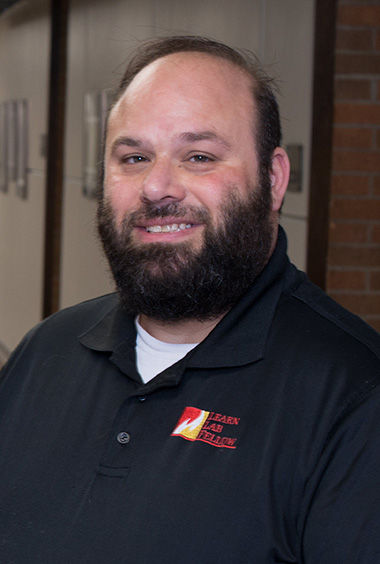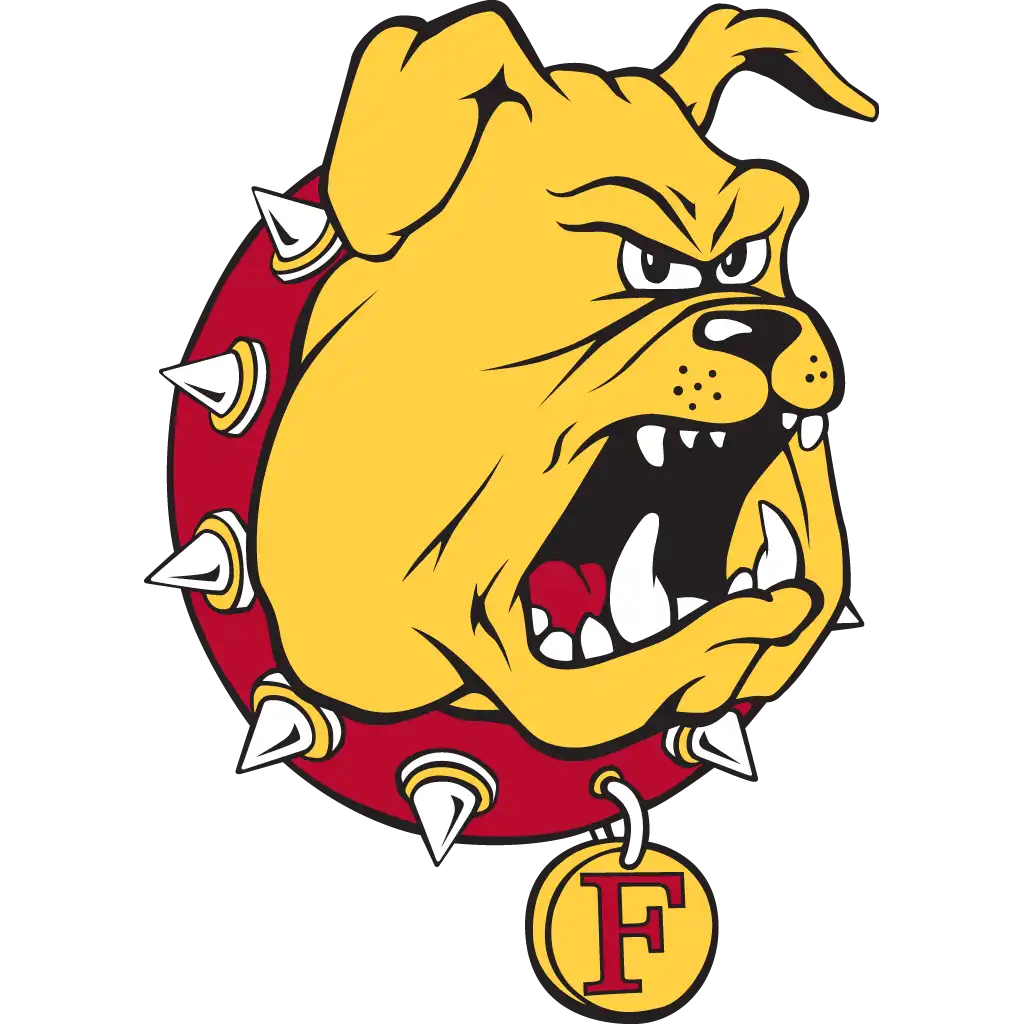Associate Professor of Mathematics
by John Smith - April 7, 2017

Some academics and professionals might define their desired outcome early in life, follow a prescribed course to achieve that goal and thereafter nurture a successful career. Associate Professor of Mathematics Victor Piercey has found his joy at Ferris State University, following a series of what he calls “successive, improving approximations.”
Piercey began his academic pursuits and journey in lifelong learning at Michigan State University, with history capturing his interest.
“I had a strong focus on Soviet history,” he said. “I saw strands of Plato’s philosophy in what I read about Lenin.”
His first degree was a Bachelor of Arts in Humanities at Michigan State, which Piercey described as a “build-it-yourself” degree, which he hoped to use to advance toward earning a Doctorate in Economics.
“I had taken a problem-solving perspective in my academic pursuits,” Piercey said. “That included an internship in Moscow, where I was helping to establish ‘western-style’ restaurants in that market. While it was interesting work, I was looking for a greater challenge and those I collaborated with advised me to consider a career in law, which could be achieved with three years of studies.”
After earning his Juris Doctor from the Columbia University School of Law, Piercey remained in New York and continued to explore international interests through his law firm’s activities with Eastern bloc businesses.
“I had to deal with some family crises during that period,” Piercey said. “Both of my parents and my brother passed away, then I experienced a most difficult day, along with the rest of our country, as I was working in New York City on Sept. 11, 2001.”
He decided to explore his career interests further, and that process narrowed the field to mathematics, or physics, with Piercey earning his Ph.D. in Mathematics at the University of Arizona.
“Teaching presented me so many different and satisfying experiences,” Piercey said. “I found that my interests lie in helping students gain greater benefit from their learning, by shaping their math instruction to support the applications they will encounter in further studies.”
A focus of Piercey’s efforts since his arrival on the Ferris campus in 2012 is to develop new Mathematics classes, known as “Quantitative Reasoning for Professionals, One and Two,” or MATH 109 and 114. After years of piloting these classes as experimental courses, which were designated as MATH 190, this is the first academic year that the new courses are offered from the permanent course catalog.
“We have seen some measures of success, from our pilot offering of a two-semester sequence, under the General Education-Math curriculum,” Piercey said. “Students are reporting they feel less anxiety in this class, and they have a better perception of math as a subject. It will be great to see how this offering helps in later courses, such as Accounting and Economics.”
The collaborative efforts to develop and improve these classes, particularly to expand its audience from Business students to others in Social Work and Health Professions majors, will follow a five-year path, supported by an $186,000 grant from the National Science Foundation. Piercey is the principal investigator in this project, with Social Work Professor Mischelle Stone and Assistant Professor of Nursing Rhonda Bishop providing their expertise in the preparation of, and review of revised course materials. They are planning on building interdisciplinary workplace simulations involving data-based problems, while developing discipline-specific case studies that can be used with increasing sophistication throughout the courses in the major programs. Assistant Math professors Erin Militzer and Anil Ventakesh will edit the materials produced by this team over the course of the five-year study. The desired outcome is to shape the course content to benefit Business, Social Work and Nursing students with appropriate context and applications for students in these programs.
“Getting Mischelle and Rhonda’s expertise is going to be really exciting,” Piercey said. “Both of them are kindred spirits in this cause, and I am excited about where we are going.”
Ferris is one of 11 institutions involved in this foundation grant, entitled SUMMIT-P, or “A National Consortium for Synergistic Undergraduate Mathematics via Multi-institutional Interdisciplinary Teaching Partnerships.” Piercey is a co-principal investigator on the larger, $2.6 million NSF grant that covers all 11 institutions. Ferris and the 10 other institutions will operate as a faculty learning community, to implement research known as the “Curriculum Foundations,” started by the Mathematics Association of America. Piercey said he will be making campus visits throughout this community over the course of the study, and other experts will visit Ferris, to learn about what is being developed here.
“The whole inter-institutional team can rely upon each other, and developing content based on their perspectives will make our classes shine,” Piercey said. “I am very excited to be making these visits, as we hope to get as much perspective as possible, from administrators, to instructors and students. That’s where magic happens.”
Piercey said another emphasis of the Ferris initiative is to help students improve their writing skills, so they enter their careers capable of presenting their thoughts clearly.
Beyond working to advance grant-funded academic study and providing leadership to the faculty learning community, Piercey is also promoting inquiry-based learning in his own classroom instruction.
“To help students get relevant exposure to concepts like algebraic formulas, I offered a mockup of end-of-shift paperwork that I had to complete, when I managed a franchise restaurant during my college days,” Piercey said. “One part of the form required us to calculate something called fry efficiency. In class, students are challenged to come up with a way to measure fry efficiency given data available to shift managers, which is provided to the students in a spreadsheet. This has to be programmed in Excel, so it requires an algebraic formula. Not every student is able to measure the efficiency of producing French fries the first day, but making use of an authentic context in their learning is exciting. By the second day, most of the students have it.”
The efforts to promote collaboration are not limited to the classroom, as during the fall semester, Piercey worked with College of Arts, Sciences and Education Dean Kristi Haik to host an end-of-term workshop for faculty, which drew about 20 instructors.
“When teachers from different disciplines are brought together, with groups of two or three breaking out to give a matter further consideration, perceptions can be expanded, the hang-ups go away and it’s a ‘secret sauce,’” Piercey said. “Our people leave the session pumped.”
In addition, in September 2015, Piercey obtained authorization from Ferris’ Academic Senate to assemble and lead a university-wide task force charged with making recommendations to improve the environment for academic interdisciplinary collaboration on campus. The task force includes faculty from all of the undergraduate colleges on the Big Rapids campus, department heads, deans, representatives of the provost’s office, and the directors of the Faculty Center for Teaching and Learning, the Office of International Education, and the Honors College. The task force has sent their recommendations to the Senate Executive Committee and final approval from the senate is anticipated by the end of this academic year. Piercey is excited about these recommendations, and expresses optimism that they will help Ferris live up to its core value of collaboration.
PHOTO CAPTION: Victor Piercey is an associate professor of Mathematics in Ferris State University’s College of Arts, Sciences and Education.
John Smith is the communications specialist for News Services and Social Media in
University Advancement and Marketing.
For others featured in the Faces of Ferris series, visit:
https://ferris.edu/HTMLS/news/faces/

